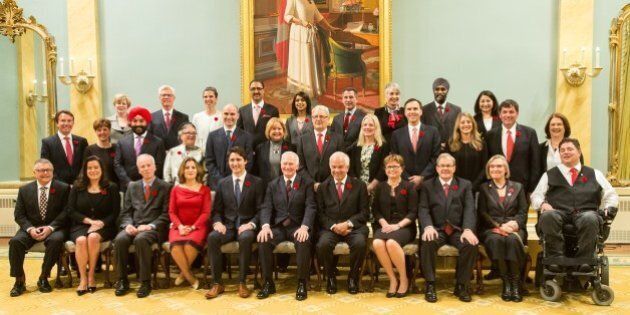
On Sunday, a CBC panel about gender balance in Prime Minister Justin Trudeau's cabinet took a strange turn. The editor-in-chief of the Walrus, Jonathan Kay, said he thinks employers need to look beyond women or people of colour and focus on candidates from low-income backgrounds. In a follow-up piece for the Walrus, he wrote "...the most profound schism in Canadian society isn't skin colour, gender or sexual identity. It's social class."
While income inequality is clearly a problem, it's strange to pit social issues that are clearly intertwined against one another. It would be great if HR departments had the capacity to eliminate poverty, but the most pragmatic way employers can fight inequality is to hire women and non-white people.
Let me start with the numbers: According to Statistics Canada, 34 per cent of both recent immigrants and single mothers experience poverty, the highest rate of any other demographics. I'm sure you've heard this before, but the wage gap still exists. In Ontario, women make 26 per cent less than men, and a recent report from the Equality and Human Rights Commission (EHRC) found that women returning from maternity leave face discrimination in the workplace. In his own article, Kay includes an email from a low-income woman who writes that she wasn't hired by both the Canadian National Railway and a moving company specifically because of her gender.
Immigrants also face barriers to success in the workplace. If the name on your resume is Samir rather than Matthew, you are 40 per cent less likely to get a job, according to a University of Toronto study. We all know the stories of doctors and engineers who immigrate to Canada and have to support their families by driving taxis or working in convenience stores. Their degrees aren't recognized. Their accents too thick. There's no question that workplace discrimination and income inequality are bedfellows.
But Kay is still skeptical about that connection. In his experience, all the "men, women, black, white, straight, gay, trans, cis, Jew, Christian, Hindu, Muslim" people he's worked with act rich and white. In other words, they play tennis like he does and "know the best patisseries in Paris." I'm not sure what country club he uses as a recruitment pool, but my experience with diversity in the workplace has been the total opposite.
Since Kay uses anecdotal evidence, so will I. Most of the second-generation immigrants or non-white colleagues I've worked with have not had typical Western upbringings. Instead, they've taught me about Indian weddings, Vietnamese food and Muslim prayer. They make sure our cultural coverage isn't insensitive, our stock photos aren't full of white people and that we cover stories the mainstream media ignores. They also know about the low-income life.
Most did not grow up "middle-class or wealthier" as Kay posits. One 28-year-old colleague was raised by a single mom in townhouses and still lives at home. He just paid off his student debt. Another 26-year-old lives at home for cultural and financial reasons and her mother works a minimum wage job (her father has a higher-paying job in the automotive industry). One colleague was raised by her refugee mother and another was herself a single mother and a refugee. They've all made me and the newsrooms I've worked in much less ignorant.
On his staff, Kay purports to want people "who lived in public housing; who experienced real hunger ... or who had been forced to remain in an abusive relationship for purely financial reasons." But they are likely still caught in the cycle of poverty, not submitting resumes to the Walrus. If companies want to help fight income inequality, they can hire women and immigrants, the demographics most likely to be poor.
*This column previously appeared in the Ottawa Citizen